Just like other recent major Mac updates, OS X Mavericks arrives as an app that wants to update the current OS X installation, and with a little work you can make a bootable USB installation drive. This allows you to easily perform partitioning for dual boot situations, clean installs, upgrades on multiple Macs, and more, plus it’s just really convenient to have for troubleshooting and simple future installations, without having to re-download OS X 10.9 every time you want to install it or perform an upgrade.
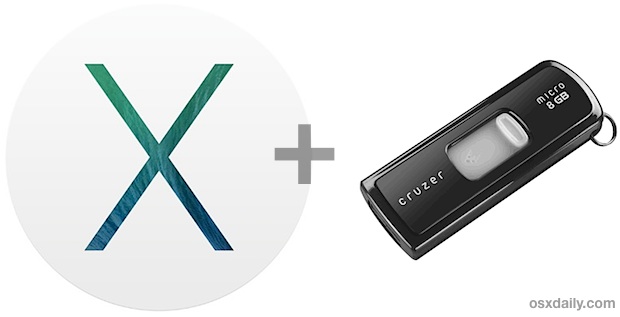
But unlike before with creating prior version OS X boot install drives, the process is slightly different with Mavericks and requires an additional set of steps to make the installer actually function as a a bootable installer disk. It’s not too complicated, just a bit more time consuming.
Before beginning, make sure the Mac you want to install Mavericks on meets the system requirements for 10.9. You will need OS X Mavericks (obviously), and an 8GB (or larger) USB drive that you don’t mind formatting, we’re using a USB thumb drive for the purpose of this walkthrough but an external hard drive should work as well.
Create a Bootable OS X 10.9 Mavericks Installer
- Download OS X Mavericks (get Developer Preview from Apple, devs only for now) but do not install it yet
- Attach the USB drive to the Mac and launch Disk Utility
- Choose the USB drive from the left side menu, click the “Partition” tab, select “1 Partition” from the drop down menu, and then click the “Options” button to select “GUID” as the partition type, click “OK” then click “Apply”
- Launch Terminal to show hidden files and relaunch the Finder using this defaults command string:
defaults write com.apple.Finder AppleShowAllFiles TRUE;\killall Finder;\say Files Revealed
- Go to the /Applications/ folder to locate the “Install OS X 10.9 Developer Preview.app” file
- Right-click and choose “Show Package Contents”, then open “Contents” and open “SharedSupport”
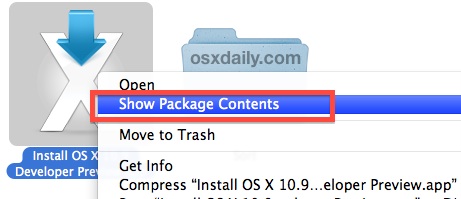
- Double-click to mount “InstallESD.dmg”
- Open the mounted ‘OS X Install ESD’ image, and right-click “BaseSystem.dmg” choosing “Open” to mount the image (BaseSystem.dmg is invisible by default, thus why invisible files must be made visible in the earlier step)

- Go back to Disk Utility, then select “BaseSystem.dmg” from the sidebar and then click the “Restore” tab
- With “Source” set to “BaseSystem.dmg”, set “Destination” to the USB drive by dragging the USB drive into the box, then click “Restore” to begin – confirm that contents of the drive will be erased
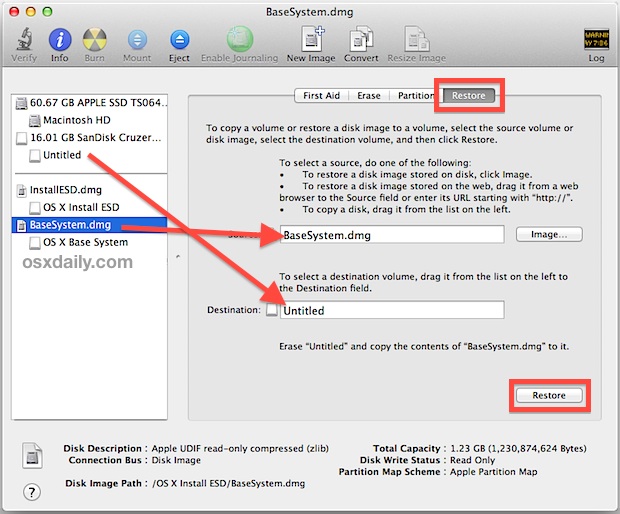
- When finished, go to Finder and navigate within the newly created USB drive to System > Installation > and delete the file (alias) located here named “Packages” – keep this window open
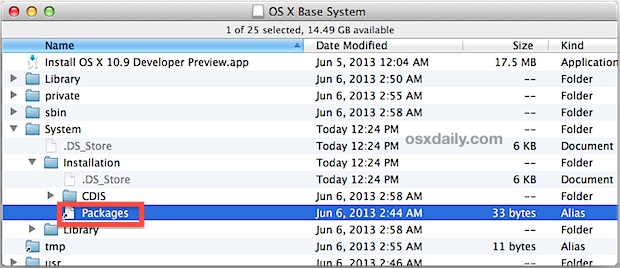
- Go back to the ‘OS X Install ESD’ mounted drive, and drag & drop the “Packages” folder into the /System/Installation/ directory you just deleted the Packages alias from, let this large folder copy
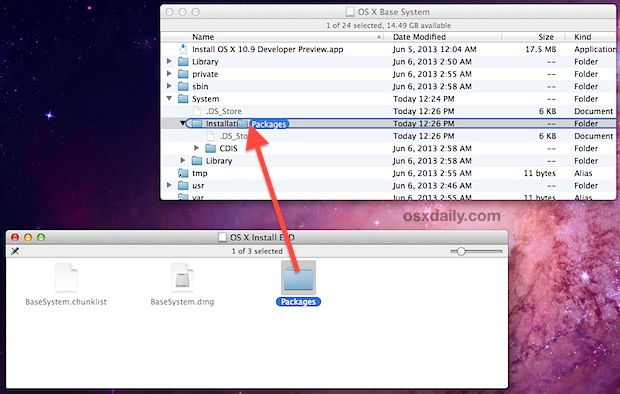
Once that Packages folder is finished copying to the drive, the USB drive is now ready to be booted from which it can install OS X Mavericks from.
Booting from OS X Mavericks Install Drive
- With the USB drive attached, reboot the Mac and hold down the Option key
- Select the orange drive, labeled “OS X Base System 1″ from the boot menu
- Proceed with the installation as usual
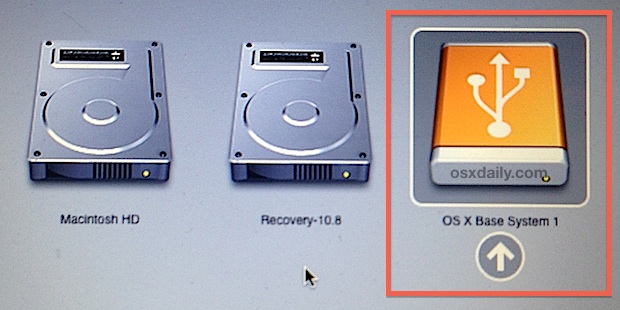
Enjoy OS X Mavericks! By the way, if there is a more direct method to create a bootable installation drive, we couldn’t figure it out. Trying to restore or use the InstallESD.dmg file does not work like it used to in the past, but it’s entirely possible there is another way. If you know how to do it, send us an email, hit up @osxdaily on Twitter, let us know on Facebook, or hollar at us on Google Plus.
source
Post a Comment